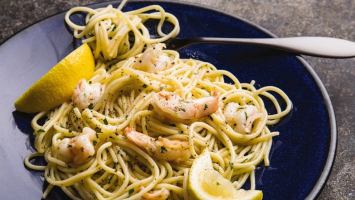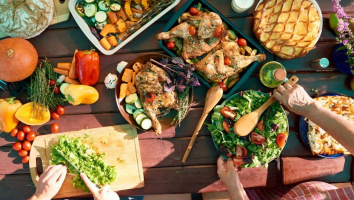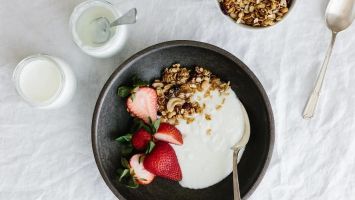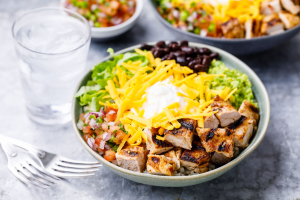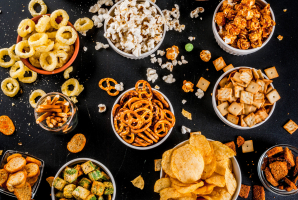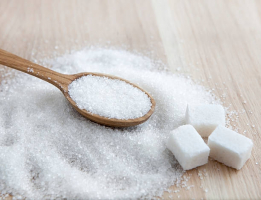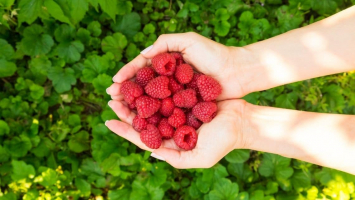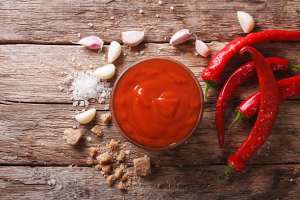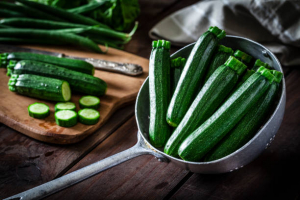Top 8 Low-Carb Alternatives to Pasta and Noodles
Even if you want to reduce your intake of carbohydrates, you probably still desire the satisfaction of chewy pasta covered with sauce. Because of this, ... read more...low-carb noodles, which are made from vegetables, like zucchini noodles, or are an alternative for pasta, like kelp noodles, are so popular right now. Below are some of the Low-Carb Alternatives to Pasta and Noodles you can add to your daily diet!
-
Spaghetti squash makes a great alternative to pasta. The flesh of this starchy vegetable is yellow-orange, and it is native to North and Central America. Its name comes from the fact that its cooked flesh may be separated into strings that resemble spaghetti noodles with a fork. The amount of carbohydrates in spaghetti squash is just approximately 20% of what the same amount of pasta, with 6.5 grams per 3.5 ounces (100 grams).
The majority of the B vitamins are also significantly more abundant, along with vitamins A, C, E, and K. Prick the squash with a fork several times, then bake it for 30 to 45 minutes at 350°F (180°C). Additionally, spaghetti squash can be cooked for 20 minutes or microwaved on high for 6 to 8 minutes. When done, separate the flesh into spaghetti-like strings with a fork and pour a sauce over it.
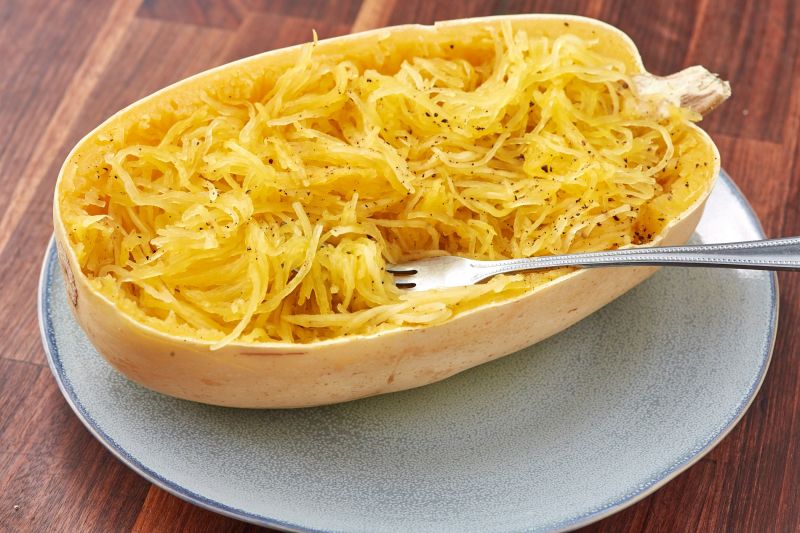
Spaghetti Squash 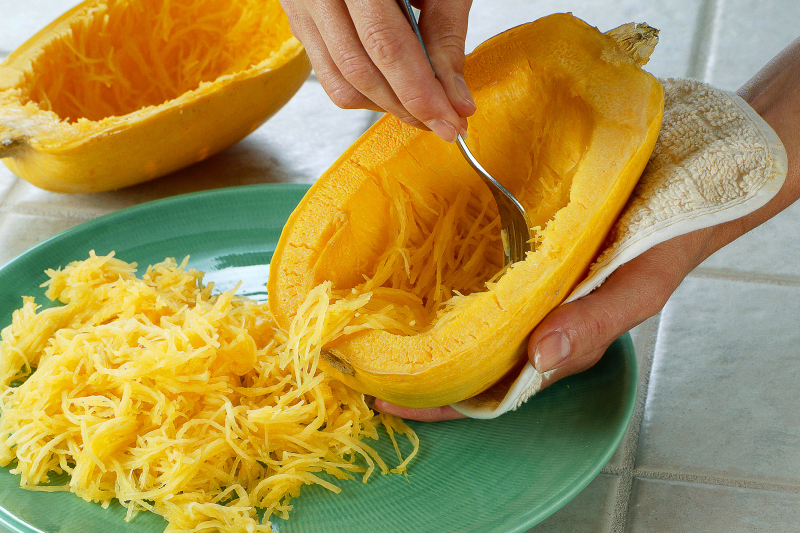
Spaghetti Squash -
Veggies that have been spiralized have taken the culinary world by storm in recent years, and for good reason: they provide a simple and attractive method to increase your intake of vegetables. Spiralized vegetables are ones that have been chopped into long, noodle-like strips that used a spiralizer.
Although many vegetables may be spiralized, zucchini, carrots, turnips, beets, and cucumbers are the most common. These vegetable noodles are not only 3-10 times fewer in carbohydrates than pasta, but they are also excellent sources of fiber, vitamins, and minerals. Increasing your vegetable intake can be helpful and may reduce your chance of developing many diseases, such as heart disease, diabetes, and even some types of cancer. Increasing your veggie intake may help you lose weight to
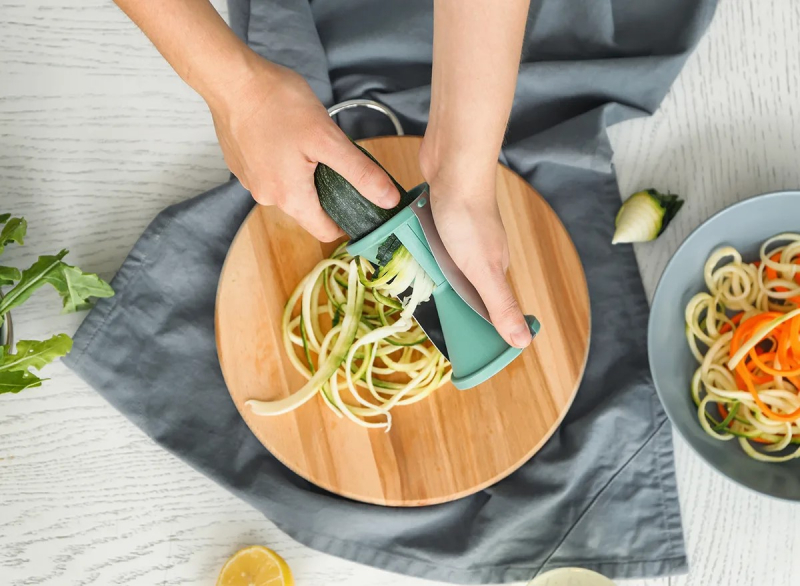
Spiralized Vegetables 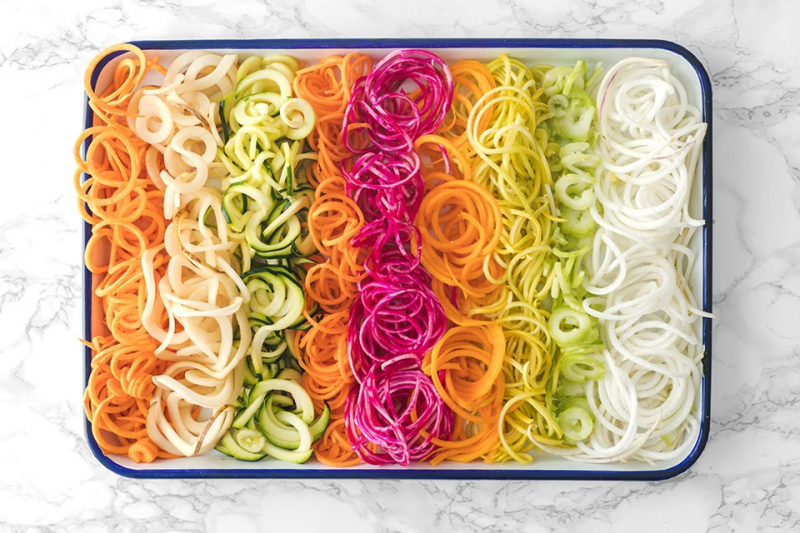
Spiralized Vegetables -
Eggplant, also known as aubergine, originates in India. Although it is actually a berry, it is most frequently eaten as a vegetable. Around 3.5 times fewer carbohydrates are present in a serving of 3.5 ounces (100 grams) of eggplant than in the same amount of pasta.
Additionally, it contains plenty of fiber, vitamins, and minerals, including manganese, thiamine, and vitamin K. Start by slicing this tasty nightshade lengthwise into thin slices before making your eggplant lasagna. After that, roast the slices until soft and golden, turning them once. Use these roasted eggplant slices instead of pasta sheets when making lasagna. If you want a meal that is moister, you may also use the raw slices without roasting them first.
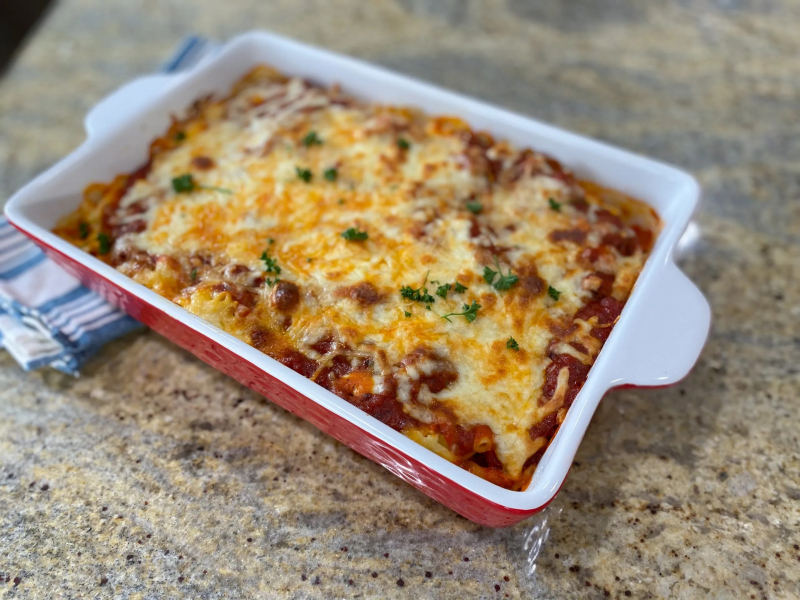
Eggplant Lasagna 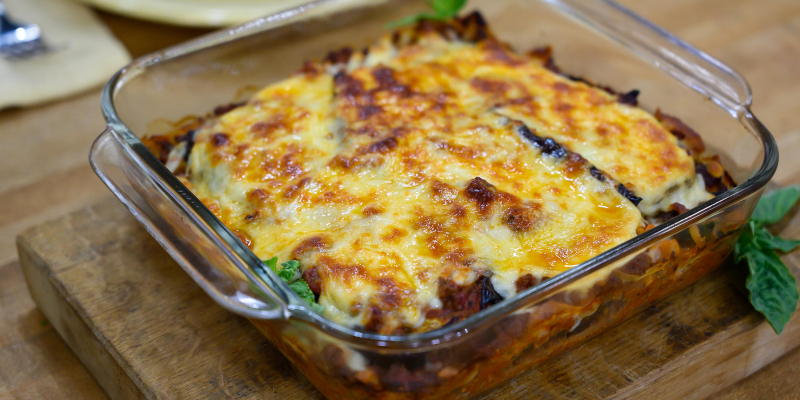
Eggplant Lasagna -
Although few people think to substitute cabbage for noodles, it is a surprisingly easy option. It has particularly few carbs, with only 6 grams in every 3.5 ounces (100 grams). Interestingly, this amount of cabbage contains 85% of the recommended daily intake (RDI) for vitamin K and 54% of the recommended daily intake (RDI) for vitamin C.
Along with a variety of other vitamins and minerals, cabbage also contains a considerable amount of folate. Instead of lasagna sheets, you may use whole cabbage leaves. As an alternative, slice the cabbage head into thin noodles for lo mein or pad thai. The cabbage leaves will be ready if they can be easily bent without breaking if they are going to be used for lasagna. Don't boil them for too long; they will continue to cook in the oven.
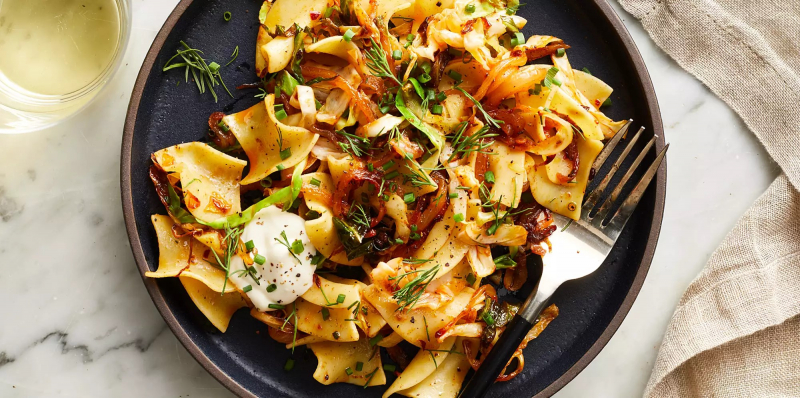
Cabbage Noodles 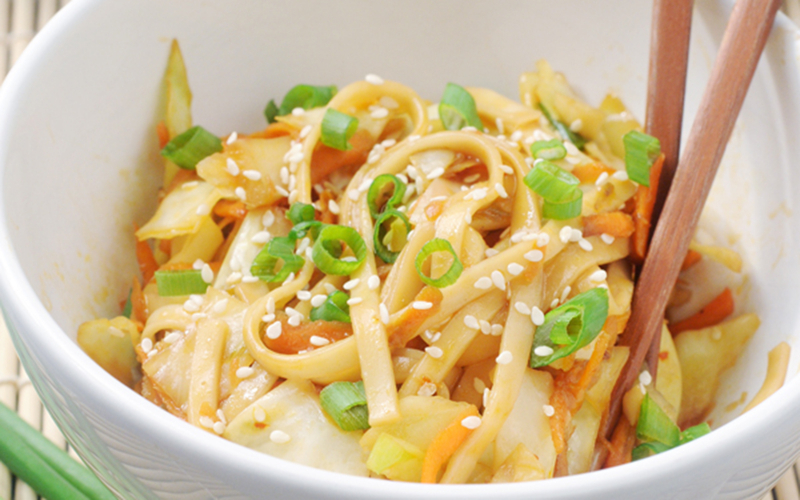
Cabbage Noodles -
You may have heard that cauliflower may be used in place of rice. But it may also be used in lieu of couscous. One potential health benefit of cauliflower, a cruciferous vegetable, is a lower risk of developing some cancers. It is high in fiber, folate, and vitamins C, E, and K but low in carbohydrates.
In comparison to pasta, cauliflower has 4 grams of carbs every 3.5 ounces (100 grams). Cauliflower florets may be used in lieu of couscous by breaking them up and processing them in a food processor until they are grated into rice-sized pieces. For 1-2 minutes, sauté the cauliflower couscous with a little oil in a big pan. After that, put a lid and continue to cook for a further 5-8 minutes, or until tender. The final product can be used in recipes like couscous.
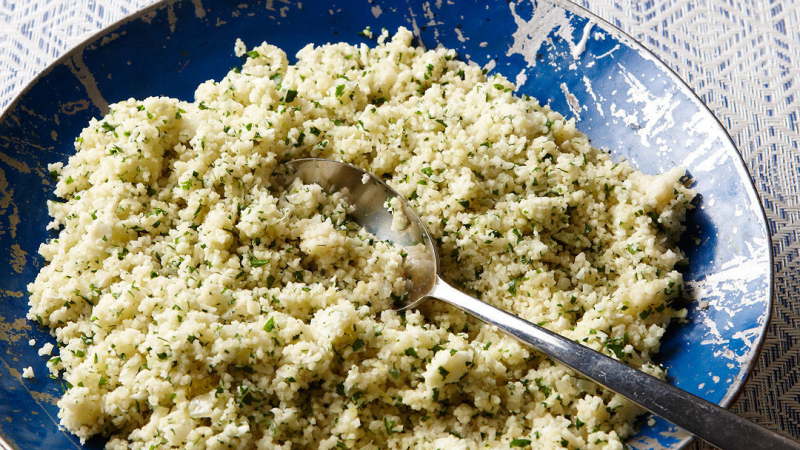
Cauliflower Couscous 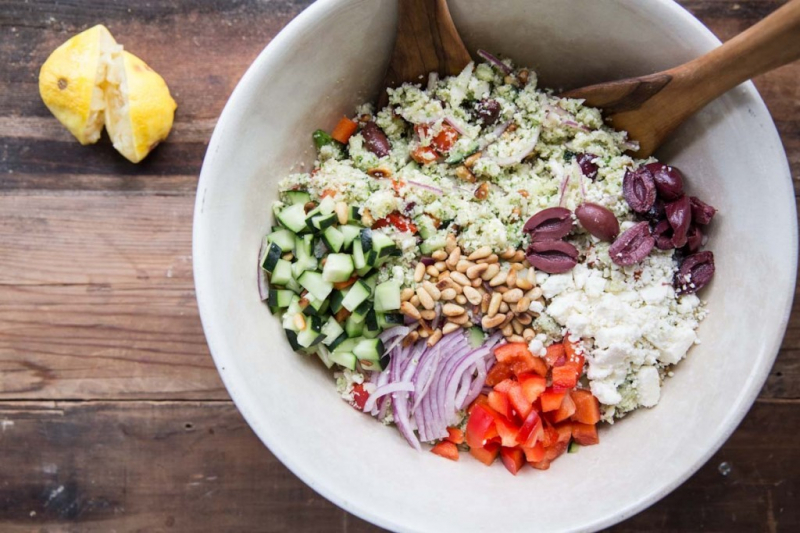
Cauliflower Couscous -
Celery and celeriac are linked and both have their origins in the Mediterranean. As a popular winter root vegetable, celeriac is used often in salads, soups, casseroles, and stews in Eastern and Northern Europe.
It’s a root vegetable that has a celery-like, slightly spicy flavor. It's a great source of phosphorus, manganese, vitamin C, and vitamin B6. At 6 grams per 3.5 ounces, it has a little bit more carbohydrates than cauliflower (100 grams). However, it still makes a healthy alternative to pasta. Cut the celeriac into smaller pieces before making the couscous. Then, continue as you would for preparing cauliflower by chopping in a food processor and sautéing it until tender.
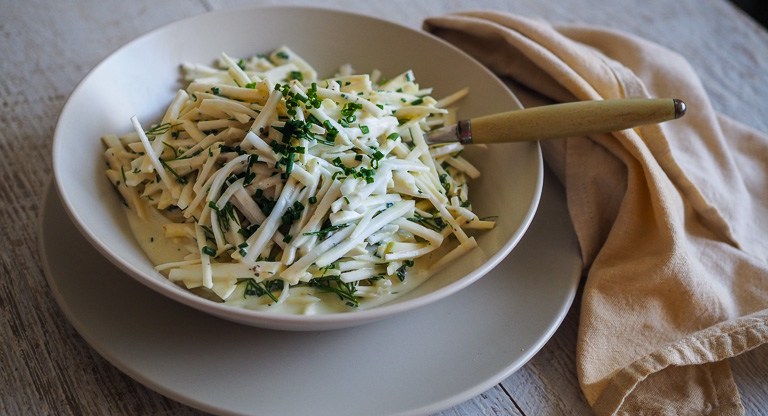
Celeriac Couscous 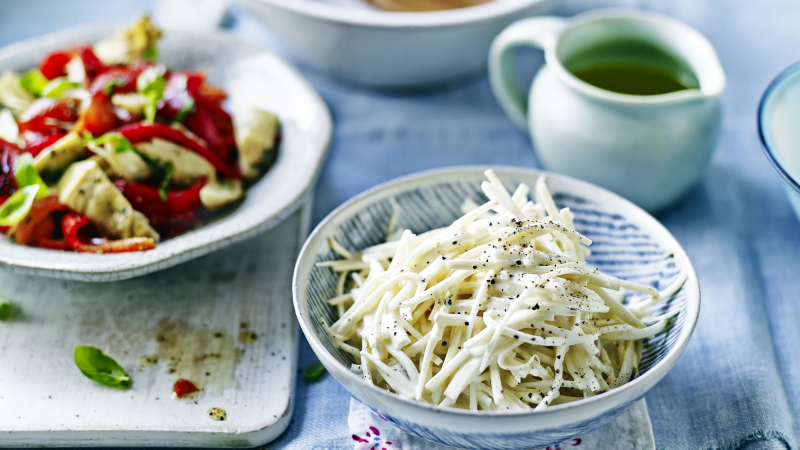
Celeriac Couscous -
A delicious but uncommon pasta alternative is onion. It's high in fiber, vitamin C, B6, folate, potassium, and phosphorus, and has just one-third the number of carbohydrates as regular pasta.
Additionally, onions are a fantastic source of flavonoid antioxidants, which have health advantages including lowering blood pressure and supporting heart health. Peel and cut your onions into 1/4-inch (0.5-cm) slices, then separate each ring and put them in a big roasting pan. Add salt and pepper, drizzle with oil, and roast the onions for 30 minutes, or until they begin to turn brown. Stir halfway through roasting. Add sauce and your favorite garnishes to finish.
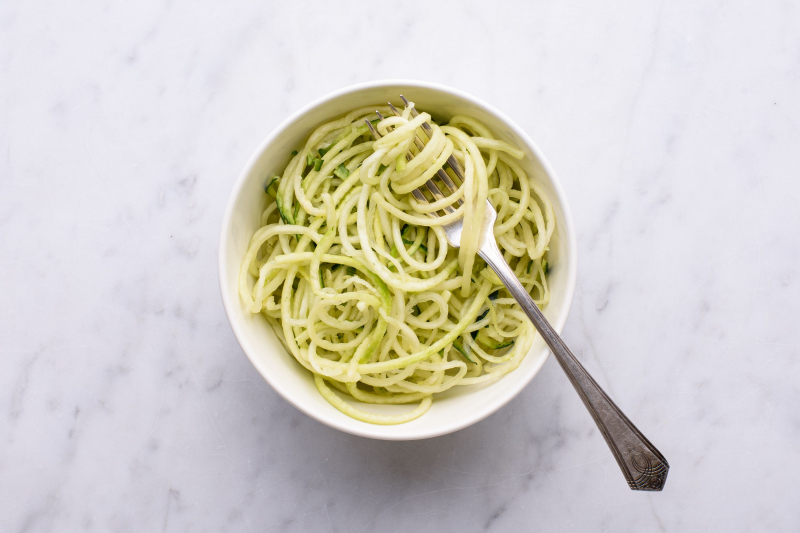
Onion Noodles 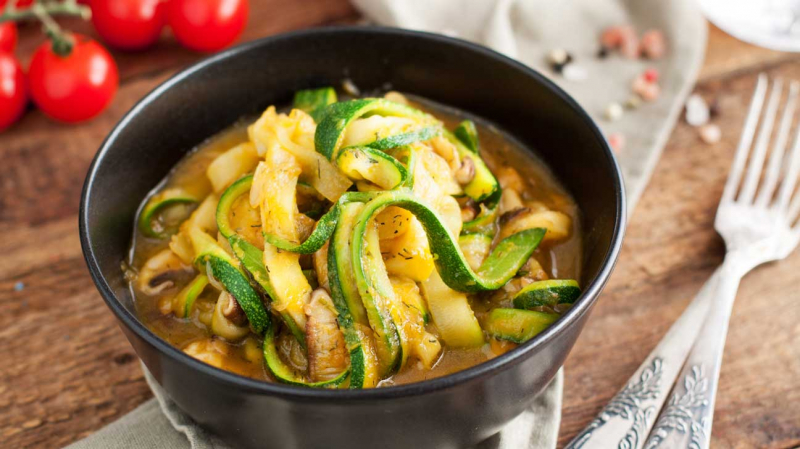
Onion Noodles -
Shirataki noodles are commonly referred to as konjac or miracle noodles. Because they are incredibly satisfying and have few calories, they are a popular low-carb substitute for spaghetti. They are made from glucomannan, a type of fiber obtained from the konjac plant. Because glucomannan is a soluble fiber, it can absorb water and gel up in your gut. Your digestion will be slowed as a result, which may help you feel fuller for longer.
Your gut bacteria use soluble fibers as food to produce short-chain fatty acids (SCFAs). SCFAs may reduce inflammation and boost the immune system. Noodles made from shirataki are simple to make. Simply take them from the box, rinse them well under hot running water to remove the liquid and warm them up. After that, add your preferred sauce.

Shirataki Noodles 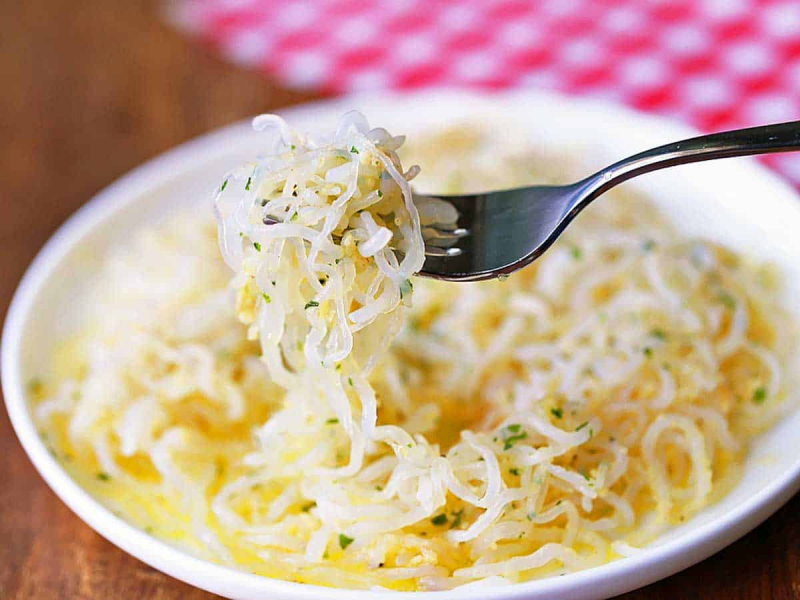
Shirataki Noodles










